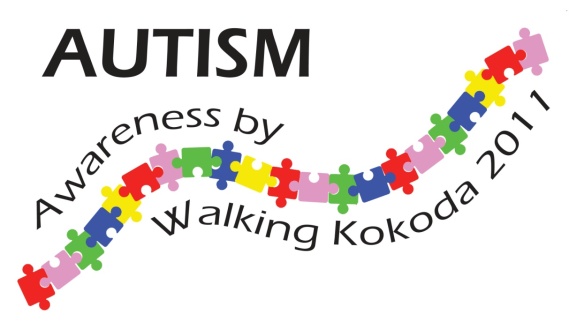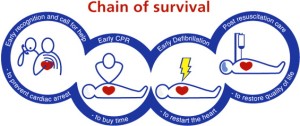From the 7th October to 17th October 2011 a team of 17 people will be taking on the challenge of completing the Kokoda Track in order to raise funds and awareness for Autism Spectrum Disorders (ASD).
Realising the importance of early defibrillation in the event of sudden cardiac arrest, the team approached Staying Alive Paramedical Services about the possibility of carrying an Automated Defibrillator (AED). The small size and lightweight of the Fred EasyPort made it the ideal solution. The Fred EasyPort has already proved itself as the ideal solution when it completed the Kokoda Track in July this year. As a result the team will be carrying the Fred EasyPort with them on the track.
ASD is a lifelong developmental disability that can impact an individual in every aspect of their life. Individuals with ASD may have difficulty communicating with and understanding other people. They may have difficulty relating to other people and they may have repetitive behaviours and a need for sameness. These differences make it extremely hard for people with ASD to properly understand other people and the world around them. The exact causes of ASD are unknown and to date there is no known cure. ASD affects 1 in every 160 individuals in Australia today. It is one of the fastest growing developmental disabilities of concern for the Australian population. Within your work place there will be someone affected by ASD. They may have a family member with ASD, a child or grandchildren with ASD, or have a friend who has a child with ASD.
In Victoria, the first port of call when an individual is diagnosed with ASD is Autism Victoria. It is therefore imperative that Autism Victoria has access to up-to-date and accurate resources to share with the ASD community.Autism Victoria is a member-based not for profit organisation and is the peak body for ASD in the state of Victoria with its aim being to improve the quality of life for people affected by ASD, their family and carers. Autism Victoria provide a range of services to individuals and agencies with an interest in ASD, including Asperger Syndrome. By raising awareness it is hoped autistic children get  improved learning opportunities and adults become more accepted in the workforce by the broader community. Greater awareness and understanding will also help put political pressure on the government to push for more funding and better services in areas such as family counselling.
improved learning opportunities and adults become more accepted in the workforce by the broader community. Greater awareness and understanding will also help put political pressure on the government to push for more funding and better services in areas such as family counselling.
The Kokoda Trekkers are also raising funds for the 1000 Book Campaign (For more information click on the following link: http://www.autismvictoria.org.au/1000books) which aims to add 1000 resources to the Autism Victoria Library so that individuals, families and professionals can access valuable information and resources in a central location. Autism Victoria aims to have the largest Autism-specific library in the Southern Hemisphere, and the money raised by the Kokoda trekkers will help to reach this goal. If you would like to find out more about making a donation to help raise valuable funds for Autism Victoria please click on the following link: http://www.everydayhero.com.au/paul_sheridan You will also receive a receipt for claiming as a tax deduction.
Please read “A family’s Personal Journey”
For more information on our ‘Autism Awareness’ campaign click on the following link: (then scroll down to meet the trekkers)
http://www.autismvictoria.org.au/fundraising/walking_kokoda.php



![topbike_new [Converted] Topbike Tours](https://stayaliveparamedic.files.wordpress.com/2011/08/topbike_new.jpg?w=150&h=148)





